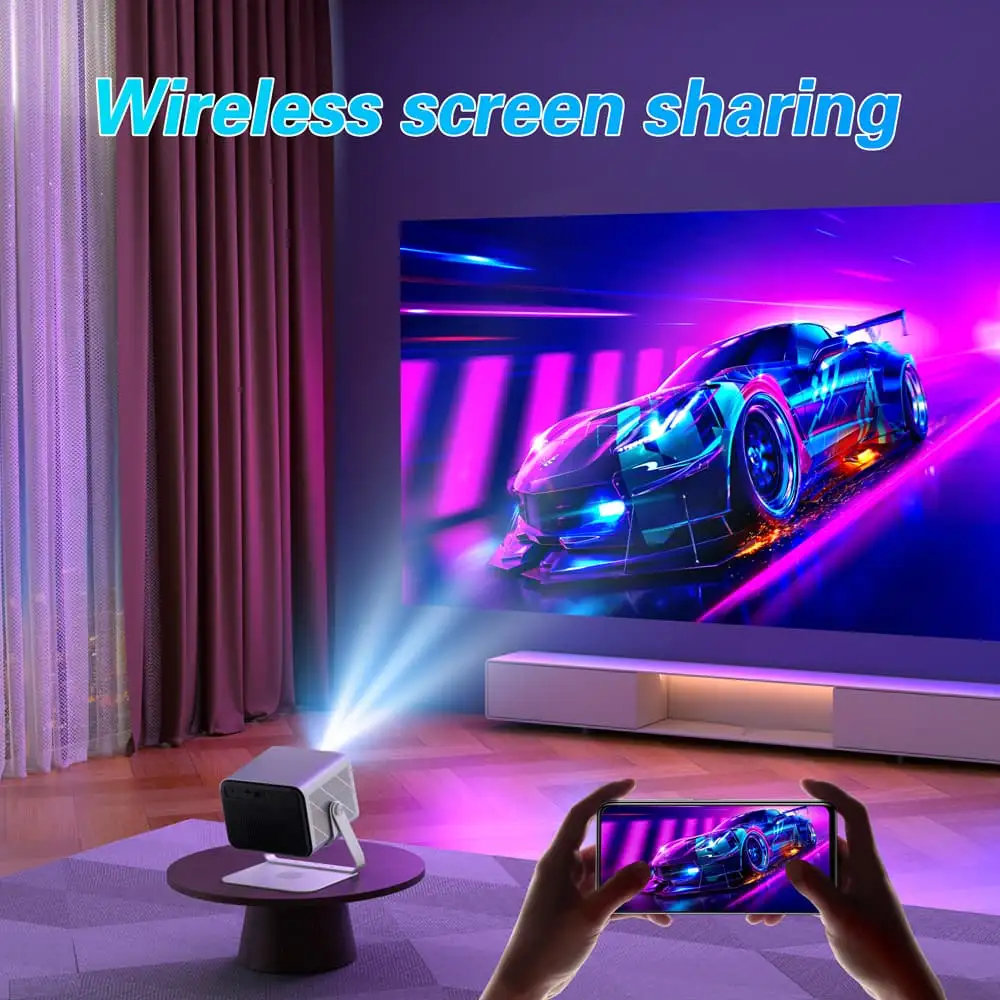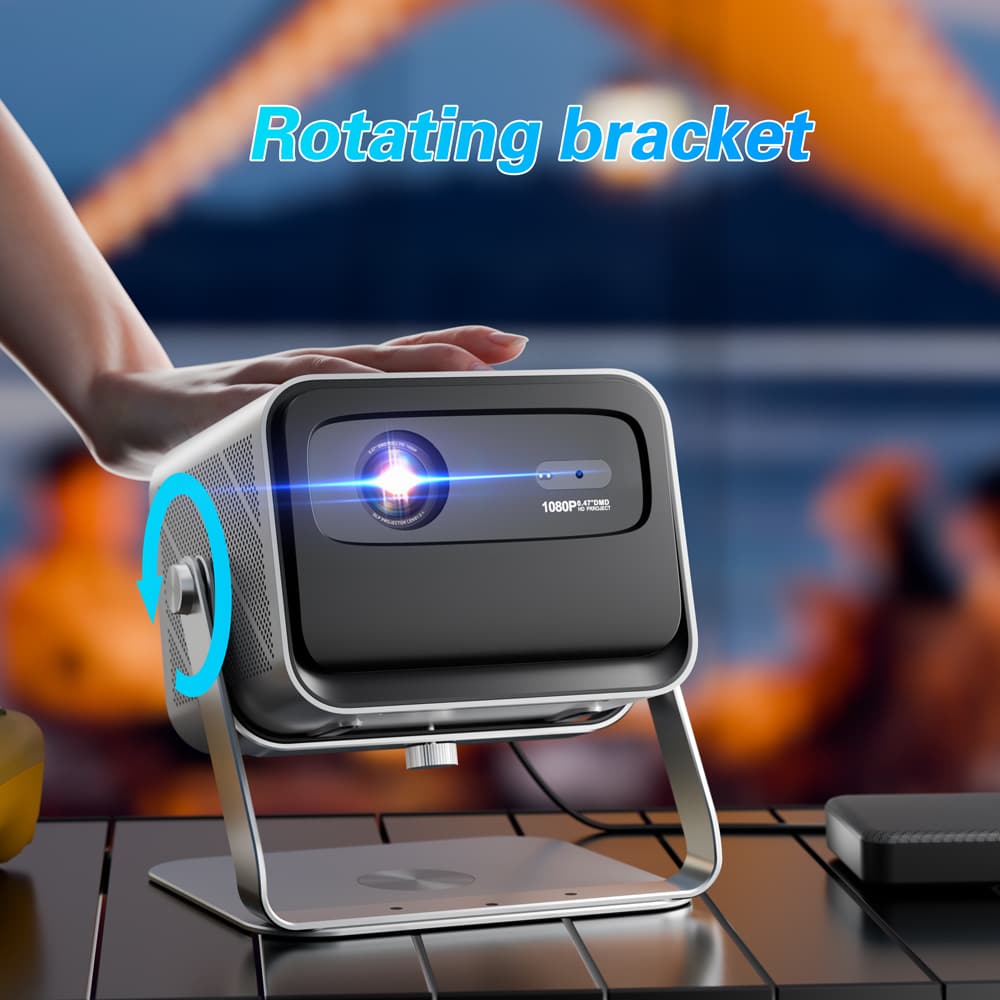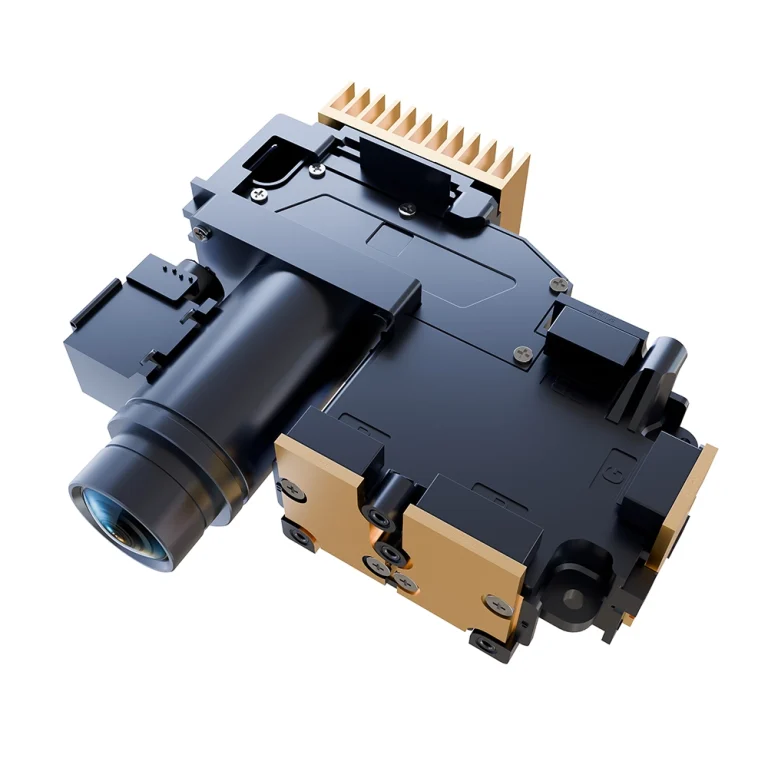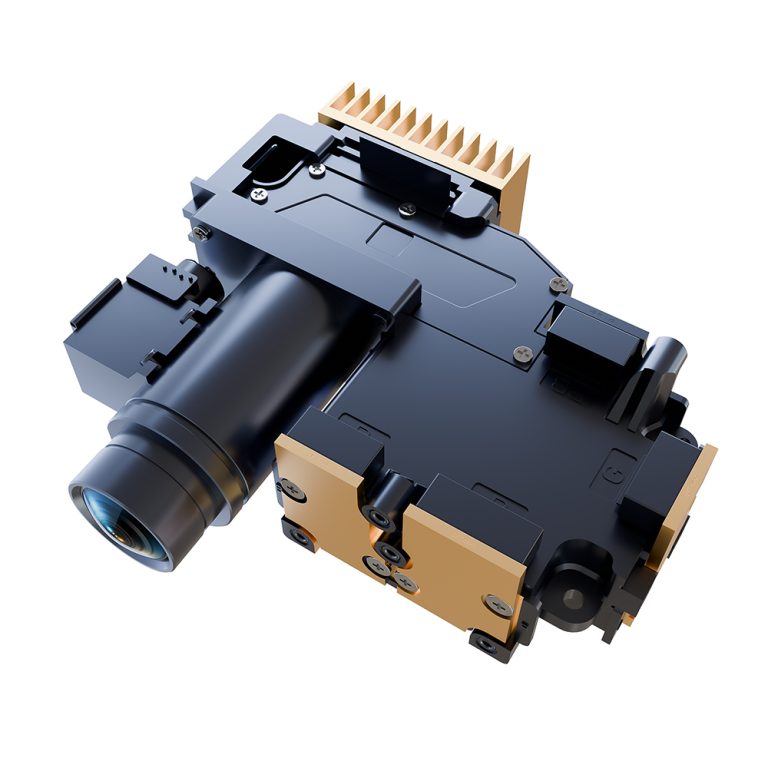
Digital Light Processing (DLP) projectors are a top pick for people setting up home cinemas, teachers, business workers, and those wanting fun outdoors. Famous for crisp pictures, rich colours, and small forms, DLP projectors use Texas Instruments’ DLP® micromirror tech to give outstanding results. Yet, with countless choices out there, picking the right DLP projector can feel difficult. This guide explains the main things to think about when selecting one. It helps you choose wisely based on what you need. We’ll talk about light output, image sharpness, how easy it is to carry, and clever extras. This covers what to look for in a DLP projector to make your watching time better.
Understanding DLP Technology
What is DLP Technology?
DLP technology, made by Texas Instruments, employs countless tiny mirrors. These mirrors bounce light to make pictures. They are part of a Digital Micromirror Device (DMD). They move quickly to create dots on the screen. This leads to sharp pictures with deep blacks. DLP projectors are known for being tough, showing colours truly, and handling fast action well. This makes them perfect for films, games, and showing information.
Why Choose a DLP Projector?
DLP projectors are special for several reasons:
- Superb Picture Clarity:They produce smooth images without visible dots and have great dark-to-light range.
- Small and Easy to Carry:Lots of units are easy to move, great for the house, job, or outside.
- Long-Lasting Light Engines:Newer DLP projectors use LED or laser light. This gives up to 30,000 hours of use. You won’t need to change bulbs often.
- Usefulness:They work well for many things, from home movies to work talks.
Knowing these good points helps build your base for understanding what to look for in a DLP projector.
Key Features to Consider in a DLP Projector
Shopping for a DLP projector means looking at several tech and practical points. We explain the most vital parts below. This ensures you pick a device that fits your exact wants.
1. Light Output (Lumens)
Light power, counted in ANSI lumens, decides how well a projector works under different lights. For home cinema setups in dark places, 600–1,000 ANSI lumens might be enough. But, for bright spots or outside, choose units with 1,600–6,000 ANSI lumens.
Think about how you’ll mainly use it. For example, high-lumen machines are best for big screens or rooms with light. They make sure pictures are bright and easy to see.
| Environment | Recommended Light Output |
| Dark Rooms (Home Theater) | 600–1,000 ANSI Lumens |
| Moderately Lit Rooms (Classrooms/Offices) | 1,000–3,000 ANSI Lumens |
| Bright Environments (Outdoor/Events) | 3,000–6,000 ANSI Lumens |
2. Image Sharpness (Resolution)
Image sharpness affects how clear and detailed the picture is. Common levels for DLP projectors are:
- 960x540P:Fine for simple talks or relaxed watching.
- 1280x800P:A solid middle ground for home fun and work jobs.
- 1920x1080P (Full HD):Best for high-definition films, games, and detailed slides.
- 4K (Ultra HD):Gives the top clarity for high-end home cinema.
For many users, a Full HD (1920x1080P) projector offers great quality without a huge cost. If money isn’t tight, 4K units give amazing detail for movie-like times.
3. Light Engine Type
The light source changes both how it works and upkeep costs. Old lamp-based DLP projectors cost less upfront. But they need new bulbs every 3,000–4,000 hours. However, LED and laser-based projectors provide:
- Long Life:Up to 30,000 hours of use, cutting upkeep costs.
- Energy Saving:They use less power than bulb machines.
- Steady Brightness:Very little fading over years.
For lasting value, choose LED or laser-based DLP projectors. This is especially true if you use it a lot.
4. Ease of Movement and Shape
Being easy to move is key for people needing a projector in many spots. Think about camping trips or office travel. Look for:
- Small Size:Units you can hold in one hand or put in a bag.
- Built-in Power Pack:Needed for outside, with sizes like 8,000–15,000mAh giving 2–3 hours of play.
- Light Build:Metal or ABS build for strength without extra heaviness.
For instance, projectors with built-in height adjusters or full-circle turn mounts offer choices for roof or slanted setups.
5. Clever Extras and Connections
New DLP projectors have smart features to make them simpler:
- Operating Systems:Android AOSP or Google TV for apps like Netflix and YouTube.
- Wi-Fi and Bluetooth:Allow showing your screen wirelessly and sending sound to outside speakers.
- Auto Focus and Image Straightening:Things like Laser TOF 1-second autofocus and automatic keystone fix make setting up easy. They guarantee perfectly straight pictures.
- Input Choices:HDMI, USB, and Type-C ports for linking many gadgets.
These traits make DLP projectors simple to use. This matters a lot for home fun or talks without tricky setups.
6. Sound Quality
Built-in sound can make your time better or worse. Look for projectors with:
- Strong Speakers:Two 2x10W speakers for deep sound in small areas.
- Bluetooth Sound Link:Hook up to outside speakers or earphones for clearer audio.
- Big Sound Spaces:Give fuller sound for films or gaming.
For bigger setups, think about adding outside speakers. This makes it feel like a real cinema.
7. Other Traits for Special Uses
Based on your needs, extra features can matter a lot:
- 3D Playback:Great for deep movie or game times.
- HDR10+:Makes colours and contrast better for a richer picture.
- Quick Response Time:Key for gaming to reduce delay.
- Eye Safety:Things like low blue light for comfy long viewing.
Think about your main use—home cinema, gaming, teaching, or outside events. This helps you decide which features matter most.
Toumei: A Trusted DLP Projector Supplier
Before the common questions, meet Shenzhen Toumei Technology Co., Ltd. They are leaders in DLP projectors. Founded in 2013 and based in Shenzhen, China, Toumei is a certified high-tech company. They focus on Texas Instruments’ DLP® tech. With over 50 patents and a 3,000m² plant, Toumei has many projectors. These range from easy-to-carry types like the Toumei C1000 (180 ANSI lumens) to strong ones like the Toumei X5 (1,600 ANSI lumens). Their products include smart features. These are Android AOSP, Google TV, and TOF autofocus. They serve home cinema, outdoor, and job needs. Toumei’s promise to quality, fast sample making, and full OEM answers makes them a trusted choice for projector fans everywhere. Visit toumeipro.com to see their new products.
Conclusion
Picking the right DLP projector means balancing light power, image sharpness, ease of moving, and clever extras. This matches your exact wants. Whether you’re making a home cinema, giving work talks, or having outdoor film nights, knowing what to look for in a DLP projector makes sure you get top value and results. By focusing on things like light output, image sharpness, and advanced traits like autofocus or HDR10+, you can lift your viewing time. With trusted makers like Toumei offering the latest answers, finding the ideal DLP projector is simpler than ever. Look at your choices, think about your needs, and put money into a projector that makes your stuff come alive.
FAQs
What should I focus on first when looking for a DLP projector for home theater use?
Choosing a DLP projector for home cinema? Focus first on Full HD (1920x1080P) or 4K image sharpness for clear views. Then, pick 600–1,000 ANSI lumens for dark room watching. Also, HDR10+ support improves colour and dark-to-light range. Features like built-in speakers and smart streaming (e.g., Android or Google TV) make it better too.
How vital is light output when picking a DLP projector?
Light power is essential when deciding what to look for in a DLP projector. For dark places, 600–1,000 ANSI lumens is adequate. For lit rooms or outdoors, pick units with 1,600–6,000 ANSI lumens. This ensures vivid, easy-to-see pictures even with other light.
Are easy-to-carry DLP projectors good for outside?
Yes, portable DLP projectors work very well outdoors. Find types with built-in power packs (8,000–15,000mAh for 2–3 hours of use). Also, choose small designs and strong light output (1,600+ ANSI lumens). Features like automatic image straightening and wireless links make outdoor setup simple.
What to look for in a DLP projector for games?
For gaming, focus on quick response time to cut lag. Also, choose Full HD or 4K image sharpness for clear views and high refresh rates. Features like 3D playback and auto focus add depth. Plus, Bluetooth sound lets you link gaming headsets for improved audio.
Why pick a DLP projector over other kinds?
DLP projectors give better colour truth, strong dark-to-light range, and long life due to their micromirror tech. They are often smaller and include clever features. This makes them useful for home, job, or outside compared to LCD or LCoS projectors.





